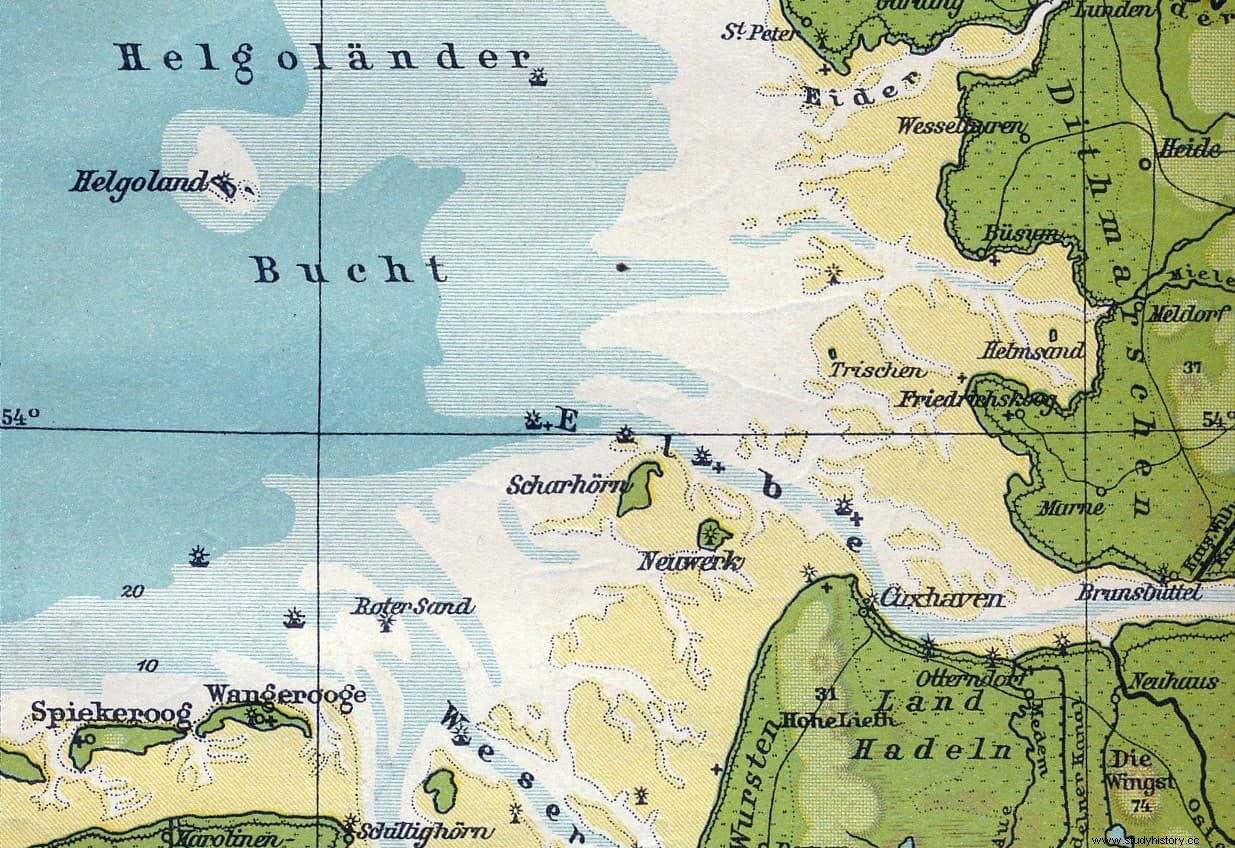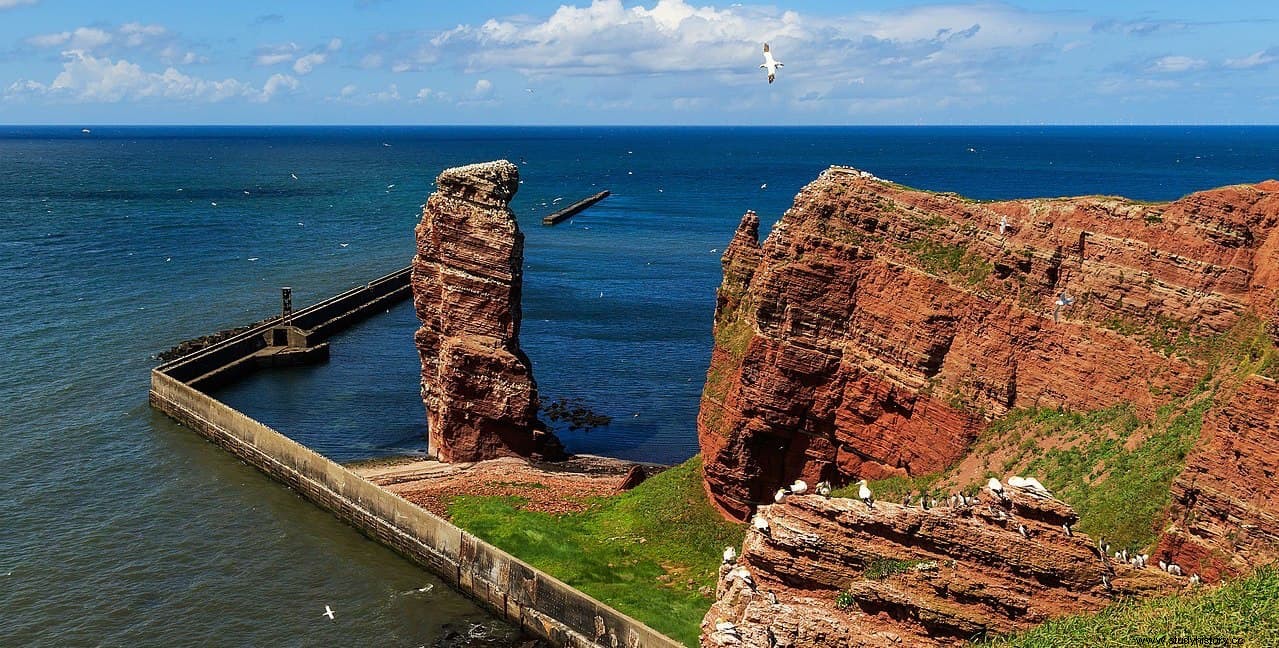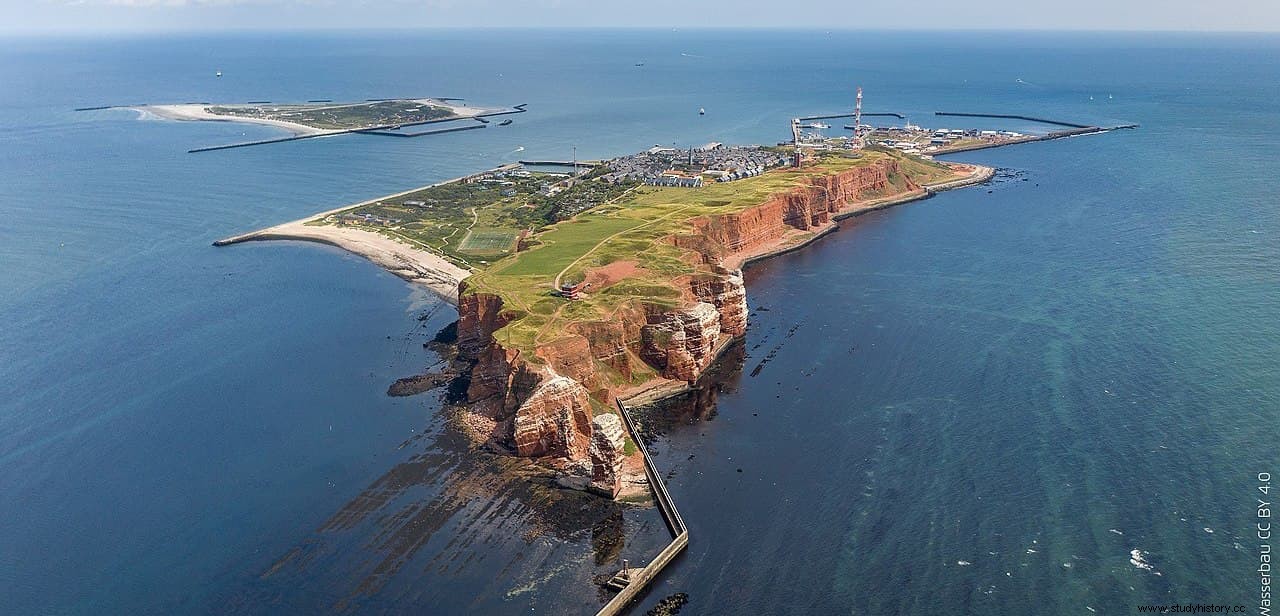Heligoland (in German Heligoland) and Düne They are two tiny islands that are located in the North Sea and belong to the German federal state of Schleswig-Holstein, seventy kilometers from the continental coast, although in other times they belonged to Denmark and the United Kingdom.
They are really small to the point that Heligoland, the largest and best known, is less than two kilometers long and is home to a charming village of a thousand and a half inhabitants, as well as a port, a heliport and a hospital; the other is just a piece of land surrounded by a beach with just enough space for a small airfield and a campsite.
The funny thing is that both are very close to each other, to the point that they were once joined by sandbanks , today submerged to depths between one and four meters due to the strong erosion of the sea, the tides and storms.

In fact, Heligoland is sinking little by little and its southern part (Unterland) is below sea level (of course the highest point, Oberland, barely reaches 61 meters), and much of the coastline, like the perimeter of Düne, have had to be protected withgroynes .
One of them surrounds Lange Anna (Ana la Larga), the local icon, a kind of stone needle 46 meters high that stood upright and separated from the adjacent cliff when it collapsed. If they hadn't put that ring of maroon-stained concrete around her, it's reckoned, the elements would topple Anne in a few years. Why that colour? For the main geological feature of Heligoland:the intense red rock that gives a very particular tone to its cliffs and that is unprecedented in these latitudes.

Heligoland had settlers since prehistory and its possession was always highly disputed, to the point that it became exchange currency in the nineteenth-century political game. As expected, the German military installed a naval base there and the initial battle of the First World War was fought nearby, while in the Second it received the first Allied bomb on German territory . The RAF and the British Navy razed it to the ground with continuous bombardments of which there are still abundant remains in the form of craters; a local legend says they tried to make it disappear. If so, they did not succeed, but they continued to use it for target practice until 1952, the year in which it wasreturned to Germany and the civilian population returned.
All this contrasts with its current situation, since both islands live on tourism , receiving numerous visitors arriving by ferry (it takes about 3 hours), small planes or even cruise ships. They are also tax exempt in various products such as alcohol, tobacco, chocolate and, of course, fuel.
Of course, they are not in great need of this, since private vehicles are prohibited (including bicycles) except those of security and health bodies, which are electric anyway. In terms of energy, the islands are self-sufficient because they obtain electricity through renewable sources and have a desalination plant.

Visitors can enjoy a tourist train that crosses Heligoland in 20 minutes, as well as an elevator that goes up to Oberland to see the town from above (there are also stairs). The underwater sea beds are also very attractive. , attracting many divers not only because of the fauna (including seals and sea lions) and natural formations, but also because there are underwater archaeological sites; It should be noted that the island was identified with the abode of the Scandinavian god Forseti , assimilable to Poseidon, and there was no shortage of people who located Atlantis there, mistaking the underwater mountain ranges for architectural remains.
But Helgoland does have something sacred, since on its soil he composed the lyrics of the Teutonic hymn the poet August Heinrich Hoffmann von Fallersleben in 1841 (music is by Haydn).
